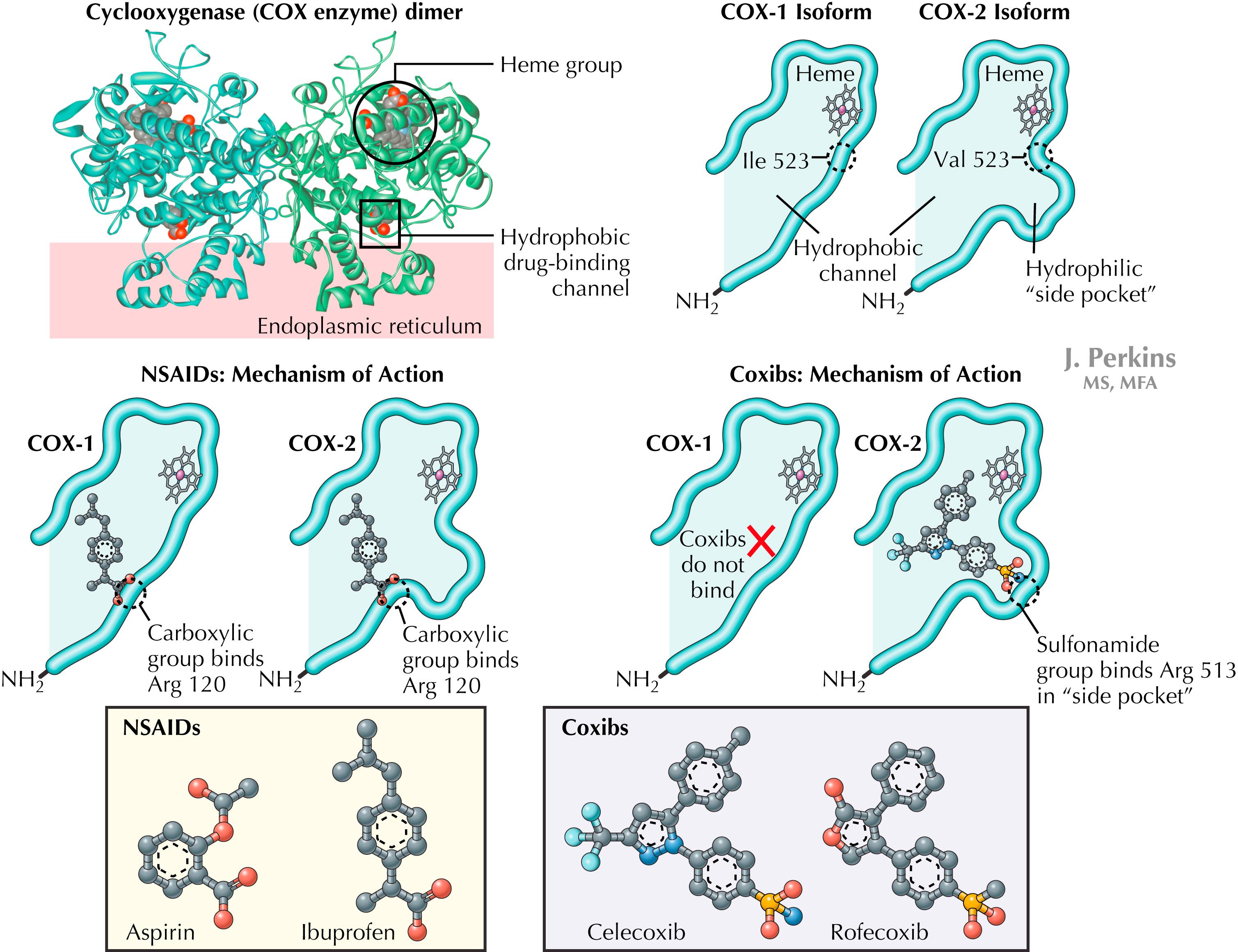Physical Address
304 North Cardinal St.
Dorchester Center, MA 02124
The pharmacology of pain management in the athletic arena can be a critical component in returning an athlete to play. Several options exist, and choosing an appropriate intervention should involve careful consideration of treatment goals and potential adverse reactions. In addition to selecting the appropriate pharmacologic therapy, it is crucial to determine the etiology of pain and incorporate a multidisciplinary approach to addressing pain in the athlete.
The International Olympic Committee released a consensus on pain management that highlights the different types of pain.
Nociceptive pain: associated with tissue damage or inflammation
Neuropathic pain: lesion in the somatosensory nervous system
Nociplastic/algopathic/nocipathic: neither nociceptive nor neuropathic; thought to be hypersensitivity secondary to altered nociceptive functioning
Early nonpharmacologic management, including implementation of biopsychosocial model for management
Physical therapy, including modalities such as ultrasound, dry needling, iontophoresis, electric stimulation, and massage
Psychological strategies should be encouraged, including muscle relaxation, guided imagery, and behavioral health therapy
Medication management principles
Acute pain
Limit opioid or nonsteroidal anti-inflammatory drug (NSAID) prescriptions to 5 days and lowest effective dose
Subacute/chronic pain
Avoid chronic NSAID, acetaminophen, or opioid use
Consider a shift in focus from relieving pain to improving function
Multidisciplinary approach, including addressing the mental health burden of chronic pain
Consider adjunct medications
NSAIDs are frequently prescribed to athletes by sports medicine providers as a way to limit inflammation and pain and to subsequently facilitate return to play. Research regarding the effects of these widely used medications has brought into question the role of these drugs in treating athletic injuries.
NSAIDs are one of the most commonly used medications. In the US population, >29 million adults are estimated to be regular users of NSAIDs.
NSAIDs work by primarily inhibiting the cyclooxygenase (COX) pathway and, to a lesser extent, the lipoxygenase pathway, thereby blocking the conversion of arachidonic acid to prostacyclins, prostaglandins, and thromboxanes.
Through this mechanism, NSAIDs exert antipyretic, analgesic, and anti-inflammatory actions.
Blocking the production of certain prostaglandins causes NSAIDs to exert an inhibitory effect on neutrophil aggregation and lysosomal enzyme release.
NSAIDs are also thought to have nonprostaglandin effects on limiting leukotriene synthesis via inhibition of membrane-related processes.
The two main forms of COX, COX-1 and COX-2, are thought to have different functions ( Fig. 7.1 ).
COX-1 is presumably a constitutive enzyme involved in the synthesis of prostaglandins that regulate physiologic processes; it plays an important role in the function of the gastric mucosa, kidneys, vascular endothelium, and platelets.
COX-2, on the other hand, is primarily considered an inducible isoform (although data show that it may have a role in certain constitutive processes), involved in the synthesis of prostaglandins that mediate inflammation, pain, and fever in response to tissue injury.
The concept behind the development of COX-2–specific inhibitors was to theoretically preserve the physiologic function of COX-1 while limiting the effects of COX-2 on tissue injury.
Nonselective NSAIDs block both isoforms and subsequently may have more side effects than selective COX-2 inhibitors.

Pharmaceutical compounding of NSAIDs is readily available in the United States. These formulations are prescribed in the form of a gel, foam, spray, cream, or patch.
Purported benefits of topical delivery of NSAIDs lie in the decrease in adverse systemic effects on the gastric mucosa, kidneys, and vascular endothelium.
Serum concentrations of topical NSAIDs appear to be considerably lower than the levels measured after oral intake or intramuscular (IM) administration; this may result in fewer drug–drug interactions.
Older adults report a higher incidence of adverse effects than younger individuals.
The most common side effect is local irritation at the application site, although this is uncommon.
Several trials have demonstrated the efficacy of topical NSAIDs with improvement in subjective pain symptoms. A Cochrane review showed the number needed to treat was less than 4 for several preparations of topical NSAIDs.
Topical NSAIDs provide an alternative mode of use in the setting of acute superficial soft tissue injury with limited side effects.
Few NSAIDs are available for use as IM injections, and their use is controversial.
IM ketorolac (Toradol) is widely used before athletic competitions in college and professional sports; however, there are limited data, and actual prevalence of use remains unknown.
Ketorolac reaches its peak plasma concentration within 45 minutes when administered via an IM route compared with 20 minutes via the oral route.
In general, it is recommended that ketorolac not be used prophylactically as a means of reducing anticipated pain during practices or games.
It should be given in the lowest effective therapeutic dose and should not be used in any form for >5 days, as the side effect profile is nearly equivalent to oral administration.
General caution and discussion of risks and benefits with the athlete should be considered before administration of an IM NSAID such as ketorolac.
Within the NSAIDs family, there are several subclasses that may provide subtle differences in metabolism and therapeutic effects ( Box 7.1 ).
ASA
Salicyl salicylate
Diflunisal
Diclofenac
Ketorolac
Tolmetin
Mefenamic acid
Meclofenamic acid
Nabumetone
Indomethacin
Sulindac
Etodolac
Ibuprofen
Naproxen
Ketoprofen
Become a Clinical Tree membership for Full access and enjoy Unlimited articles
If you are a member. Log in here